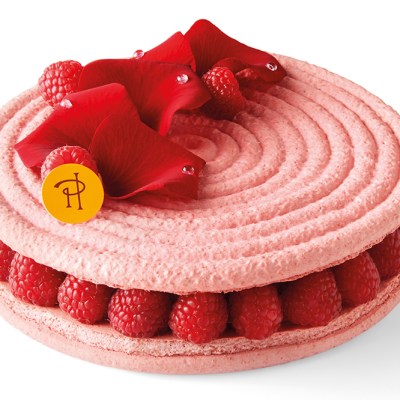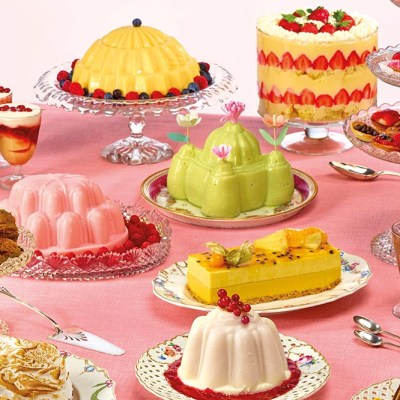The British painter Florence Houston is fascinated by jelly. Having trained in oil painting at Charles H. Cecil Studios, an art school in the city of Florence, Houston turned her attention to the dessert in 2021, intrigued by its long history as a food that many consider more appealing to the eyes than the stomach. In still lifes such as Gauloise and Aspic (both 2024), Houston captures the decorative qualities of moulded jellies, depicting their intricate forms in colours ranging from lime green to deep red against equally vivid backgrounds, and making their slipperiness seem both beautiful and grotesque. These are among several other confection-inspired paintings at ‘Powder Puff’, an exhibition of Houston’s recent works at Lyndsey Ingram in London (2 May–8 June).
Where is your studio?
It’s in Barons Court in west London, in St Paul’s Studios. They were built in the late 19th century for bachelor artists. There are incredible studios on the first floor and smaller studios on the ground floor, and a living area in the basements. One of the people I studied with in Florence bought one, and slowly more of us have moved in. There are up to three artists in each studio, and we’ve knocked the garden walls through so you can pop in and out of each other’s studios. I moved into this studio in September 2021, and I’ve been in a number before this, including one in Tite Street, where Sargent, Whistler and Augustus John once worked.
What is the atmosphere of your studio like?
It’s really nice – the people that live in and own my building are two of my best friends from art school, and their baby is my goddaughter. So I can have a coffee with them before I start work. My husband is a writer and works here too. We’ll often get a message around midday, asking who is up for lunch, and then we’ll all go out together and sit in someone’s garden. If anyone needs a critique of their painting, is having a technical difficulty or wants a tube of, say, cobalt blue paint, someone in the group will be able to help.
Gauloise (2024), Florence Houston. Courtesy Lyndsey Ingram; © the artist
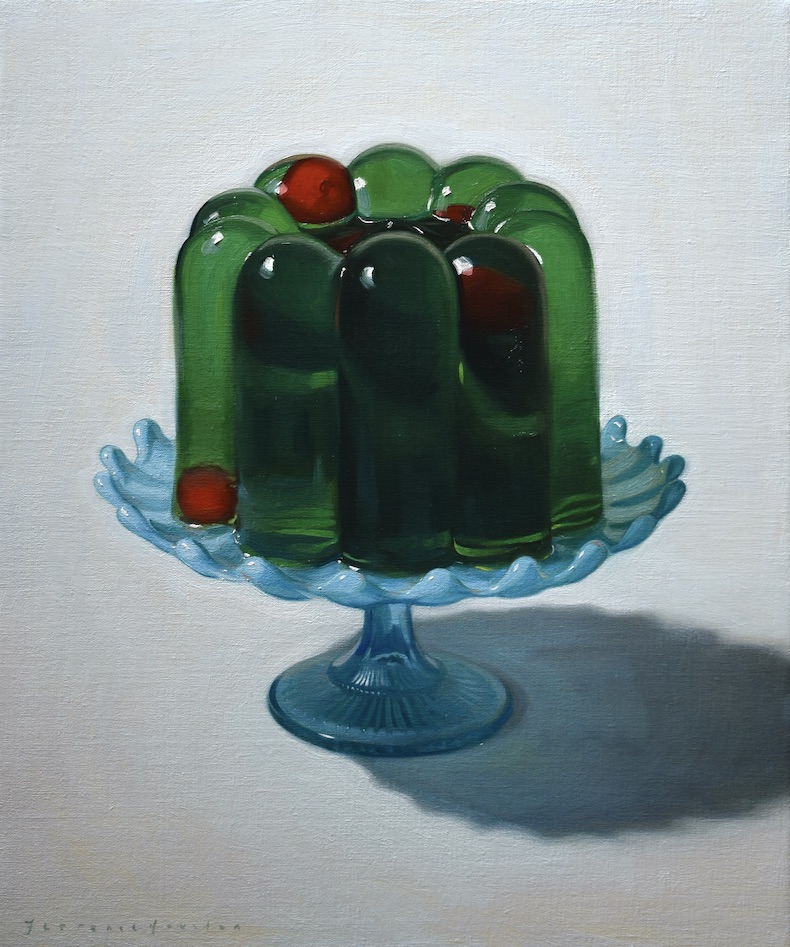
How do you spend your time in your studio?
I’m in my studio four and half days a week, and I try to make sure that when I’m here I’m ready to paint, so I do all the planning and preparatory stuff at home or on my way in. My time is quite precious now that I have two children, so when I’m in the studio I want to be making the most of it. I cycle inand then take the tube, so during that time I’ll be going through everything in my head: what part of the painting I need to work on, what my brushstrokes should be like. Or I’ll be messaging Caroline, the woman who makes my jelly, discussing what we could make next, and drawing little sketches.
Do you ever make the jellies yourself?
Sometimes, but I have found that they’re really mysterious creatures. I have a 60 per cent success rate when it comes to getting them out of the mould in one piece. They take a long time to make and at least four hours to set, so if you get to the point where you’re unmoulding it and it comes out broken, it feels like a huge waste of time. Caroline is an expert. She lives not far from my studio and will come in with a freezer bag on her way in to work sometimes and we just spend half an hour unmoulding jellies. Then she lets me get on with it, I start photographing them and they just sit in my studio until they’re really disgusting and I have to chuck them away.
Pink Whip (2024), Florence Houston. Courtesy Lyndsey Ingram; © the artist
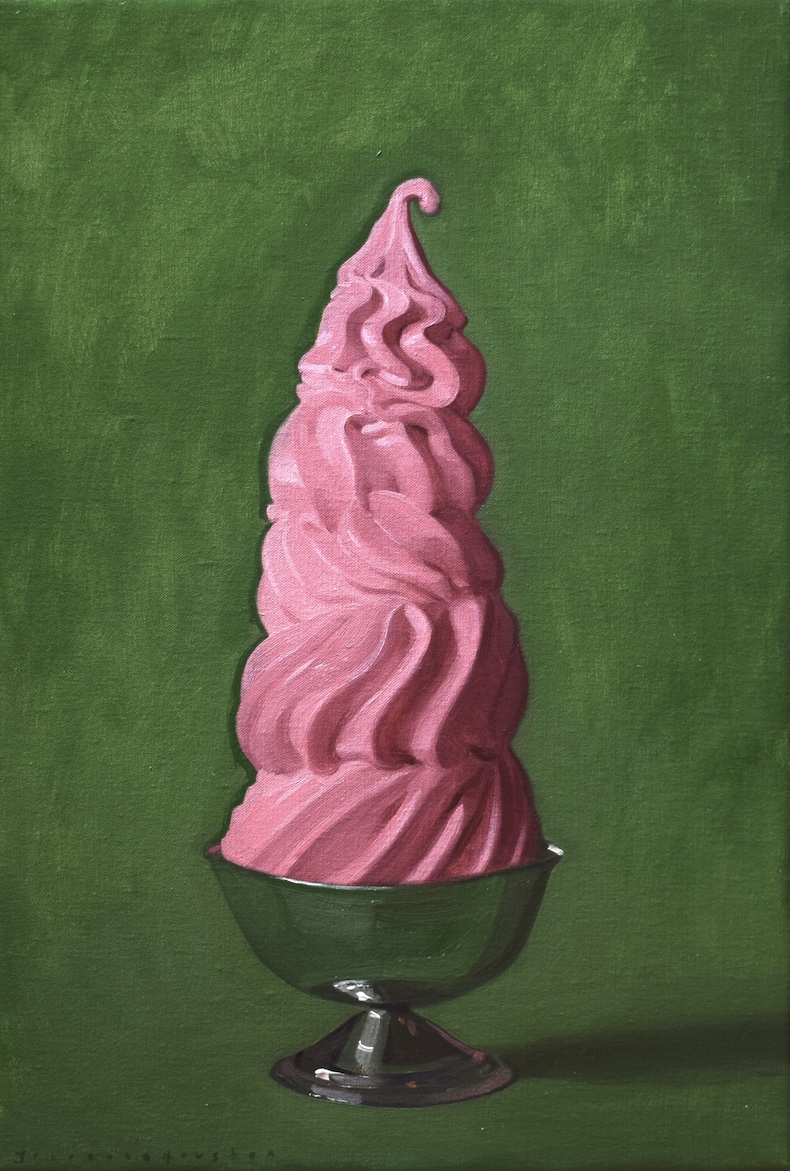
Where do the jelly moulds come from? Do you keep many in your studio?
Caroline is a keen collector. I have a modest collection myself, but she’s in with the jelly mould dealers, so she’ll come to me and say, ‘I’ve got the new Macedoine’, ‘I’ve got the Russell’; she’s slowly ticking off the list of moulds she wants. There are copper, ceramic, glass, aluminium and plastic moulds. Many of the copper moulds are from the Victorian era – I bet there are even some from the Georgian era – and they’re lined with tin. The tin deteriorates, so they’re used more as collectors’ items and are hung on the wall. These moulds are more intricate, but the jelly slurps out much easier. The ceramic ones have more of a 1950s feel to them, and the glass ones are typically more recent. The ceramic and the glass moulds are harder to turn out – that’s where I’ve gone wrong a few times.
What is it about jelly that you are drawn to?
I’m drawn to decorative foods: things that are made to look at as well as eat. It’s an ostentatious thing that people do – making something for show rather than practical purposes. Personally, I don’t actually love jelly: the texture, the wetness. But I love how they have this tension of being very beautiful but also quite repulsive and amusing.
It’s also a nostalgic thing. I grew up in the era of having lime jelly at tea parties and friends’ birthdays on a paper dinner plate. It has a feeling that reminds me of my grandparents – a 1960s quality. There’s a whole mystique around how to make a jelly: how much gelatine to use, what mould to go with. There are so many places you can slip up, so there’s a real art to jelly making.
Jellies are very enticing: their colour, their shape, the way they move. They’re referenced weirdly throughout pop culture as a sexy thing. Henry VIII served it; there are even medieval recipes for jelly. Then you get to the ’70s and see jellies with eggs in them.
Aspic (2024), Florence Houston. Courtesy Lyndsey Ingram; © the artist
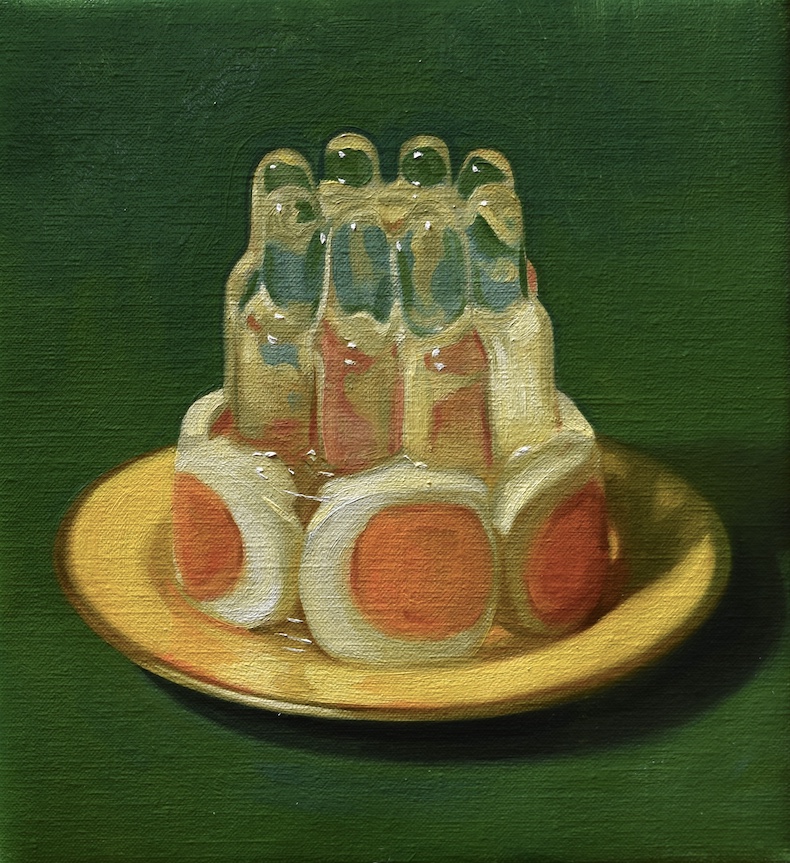
Do you listen to anything while you’re painting?
When I started coming in January after my baby was born, I found that I really needed music to change gear after a rough night. I would play not so gentle music: my first painting back in January was one of my punchiest; I was listening to Brat by Charli XCX while I was painting that. It’s really colourful and has quite a menacing presence. I’ve also been listening to Future Islands, Christine and the Queens, Lana Del Rey. I tend to listen to a different album while working on each painting, and I associate that painting with that album.
What the most unusual thing in your studio?
Normally it would be mouldy jellies! I also have this tower of real glacé cherries, which I painted for one of the works in the show. It’s not mouldy and I think I can probably keep it for another two years. It’s already a year old! One other thing I have is a bit disgusting: a mouse in oil. It’s from eight studios ago, when I was in a studio that had a mouse problem; sometimes we’d come in and there would be painted footprints across our palettes. I used to keep the bottle of oil on my palette, with the lid balanced on top. One day I came in and he was in there, and I just felt he had to stay with me. He’s essentially mummified himself in linseed oil. I’ve even painted him.
Cosmic Cherry (2024), Florence Houston. Courtesy Lyndsey Ingram; © the artist
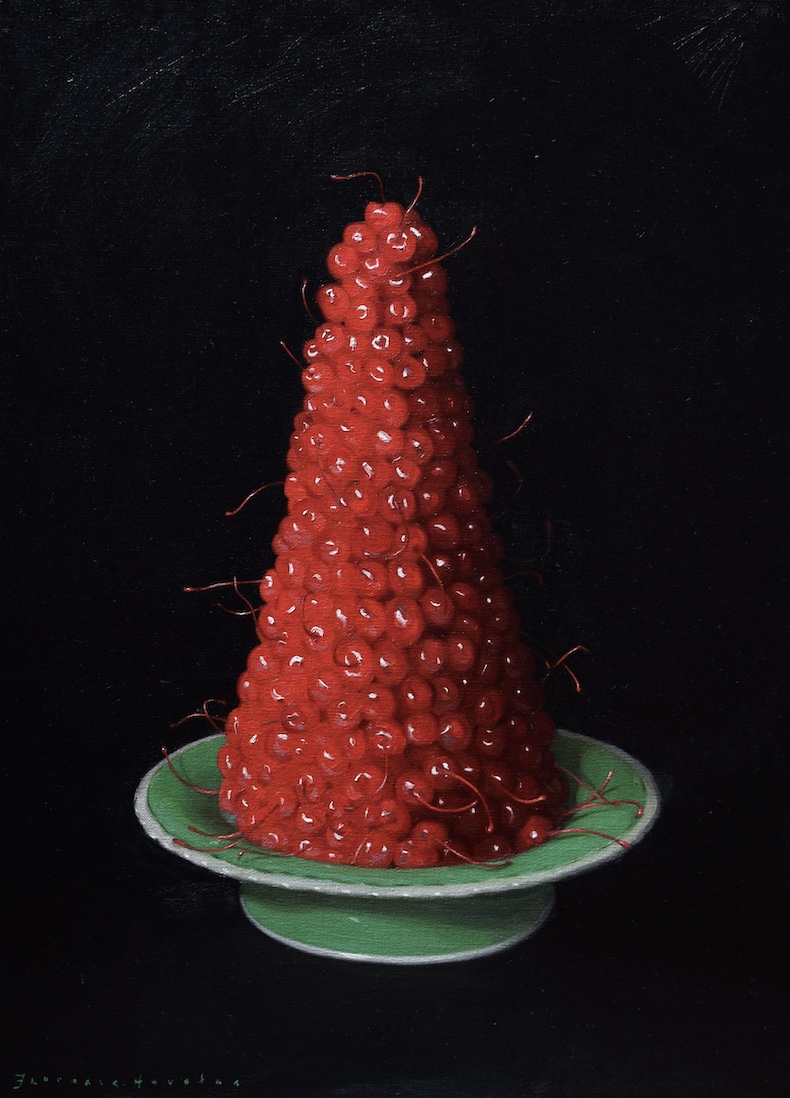
What the most well-thumbed book in your studio?
Probably the Dictionary of Colour Combinations. It’s a little Japanese book that shows you how a colour is used in all kinds of combinations. I used to carry one in my handbag. I have this theory that we all work with our own colour combinations – I gravitate towards cooler, light colours – and naturally feel my way around a painting with those colours. It wasn’t intuitive to me to work in a warmer palette, and I would refer to that book a lot.
I don’t keep any artist books in my studio. In my twenties I spent too much time looking at the work of other artists and being frustrated when I couldn’t get to where they had. I realised it was better to concentrate on my own work; I would never succeed if I tried to be someone else.
As told to Lucy Waterson.
‘Powder Puff’ is at Lyndsey Ingram, London, from 2 May to 8 June.

